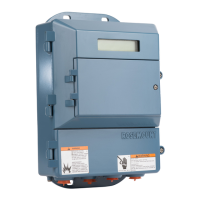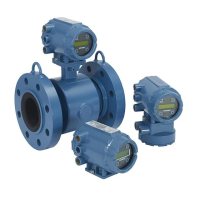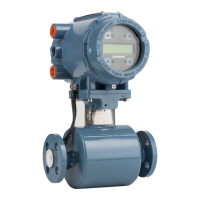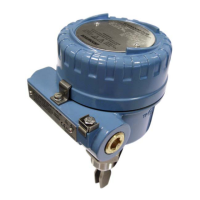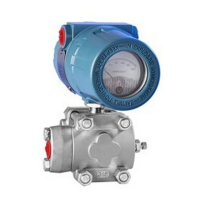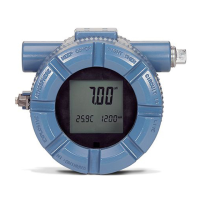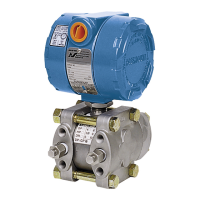Reference Manual
00809-0100-4004, Rev BA
August 2010
Rosemount 8800D
3-14
Range Values Range Values enables you to maximize resolution of analog output. The
meter is most accurate when operated within the expected flow ranges for
your application. Setting the range to the limits of expected readings will
maximize flowmeter performance.
The range of expected readings is defined by the Lower Range Value (LRV)
and Upper Range Value (URV). Set the LRV and URV within the limits of
flowmeter operation as defined by the line size and process material for your
application. Values set outside that range will not be accepted.
Primary Variable Upper Range Value (PV URV)
This is the 20 mA set point for the meter.
Primary Variable Lower Range Value (PV LRV)
This is the 4 mA set point for the meter, and is typically set to 0 when the PV is
a Flow Variable.
PV Damping Damping changes the response time of the flowmeter to smooth variations in
output readings caused by rapid changes in input. Damping is applied to the
Analog Output, Primary Variable, Percent of Range, and Vortex Frequency.
This will not affect the Pulse Output, Total, or other Digital Information.
The default damping value is 2.0 seconds. This can be reset to any value
between 0.2 to 255 seconds when PV is a flow variable or 0.4 to 32 seconds
when PV is Process Temperature. Determine the appropriate damping setting
based on the necessary response time, signal stability, and other
requirements of the loop dynamics in your system.
NOTE
If the vortex shedding frequency is slower than the damping value selected,
no damping is applied.
Auto Adjust Filter The Auto Adjust Filter is a function that can be used to optimize the range of
the flowmeter based on the density of the fluid. The electronics uses process
density to calculate the minimum measurable flow rate, while retaining at least
a 4:1 signal to the trigger level ratio. This function will also reset all of the
filters to optimize the flowmeter performance over the new range. If the
configuration of the device has changed, this method should be executed to
ensure the signal processing parameters are set to their optimum settings.
For a stronger signal select a density value that is lower than the actual
flowing density.
Field Comm. 1, 3, 8
Field Comm. 1, 3, 8, 1
Field Comm. 1, 3, 8, 2
Field Comm. 1, 3, 9
Field Comm. 1,3, Scroll to
Bottom
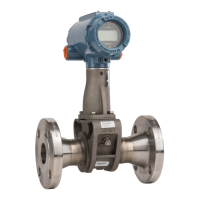
